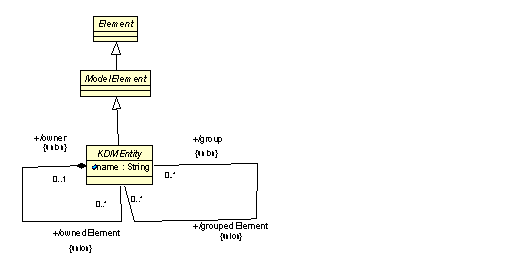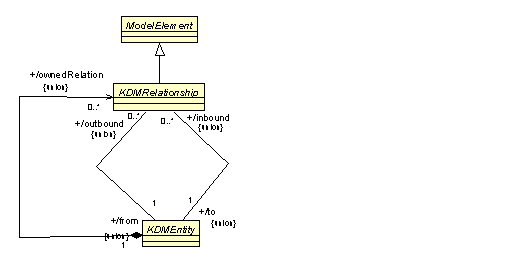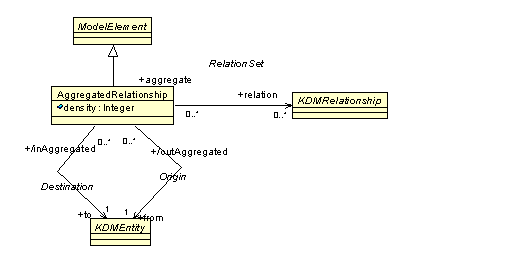CoreEntities Class Diagram
The CoreEntity class diagram defines key abstractions shared by all KDM models.
The classes and associations of the CoreEntities class diagram are shown in See - CoreEntities Class Diagram..

Element Class (abstract)
An element is an atomic constituent of a model. In the meta-model, an Element is the top meta-element in the KDM class hierarchy. Element is an abstract meta-model element.
ModelElement Class (abstract)
A model element is an element that represents some aspect of the existing system.
In the meta-model, a ModelElement is the base for all meta-elements of KDM. All other meta-elements are either direct or indirect subclasses of ModelElement. ModelElement is an abstract meta-model element.
A ModelElement can be extended through the lightweight extension mechanism.
Semantics
The ModelElement is a common class for all meta-model elements that represent some element of the existing software system. The subclasses of Element that are not the subclasses of the ModelElement class are the auxiliary elements of the KDM infrastructure.
Each subclass of the ModelElement meta-model element can be extended through the light-weight extension mechanism defined in the kdm package.
KDMEntity Class (abstract)
A KDM entity is a named model element that represents an artifact of existing software system.
In the meta-model, KDMEntity is a subclass of ModelElement. Each KDM package defines specific KDM entities that are direct or indirect subclasses of KDMEntity. A KDMEntity can be either an atomic element, a container for some KDMEntities or a group of some KDMEntities.
Associations
Operations
Semantics
An entity is a thing of significance, about which information needs to be known or held. A KDM entity is an abstraction of some element of an existing software system, that has a distinct, separate existence, a self-contained piece of data that can be referenced as a unit. Each KDM package defines several entity types representing specific abstractions related to a certain viewpoint on existing software systems.



